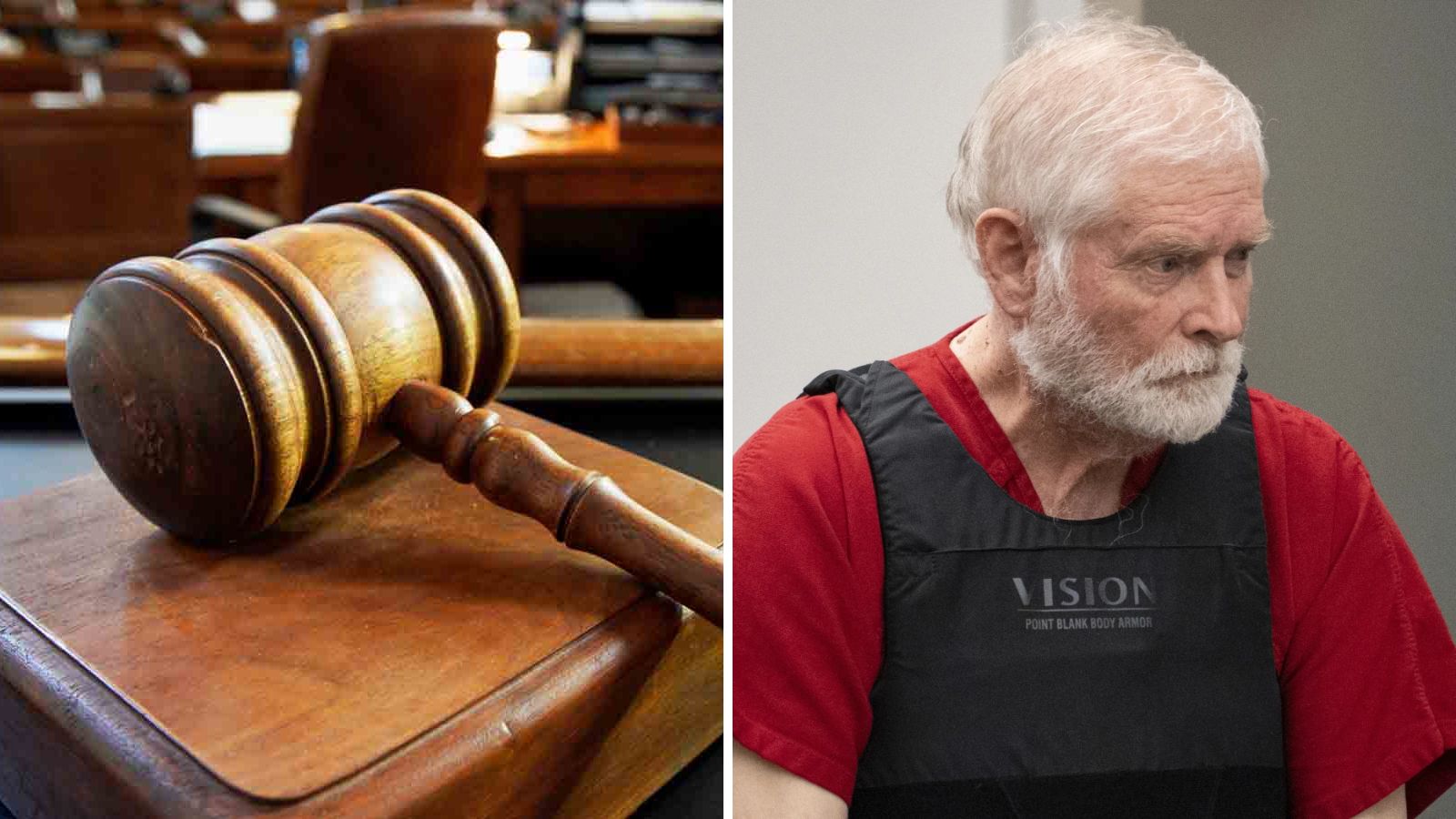‘Tragic outcomes’: Mentally ill face fatal risk with police
Sep 1, 2022, 8:31 AM | Updated: 3:01 pm

This undated photo provided by Misty Castillo shows her son, Arcadio Castillo III, at a relative's house in Woodburn, Ore. One summer night, Misty Castillo stepped out of her house in Salem, Ore., called 911 and asked for the police, saying her son was mentally ill, was assaulting her and her husband and had a knife. Less than five minutes later, a police officer burst into the house and shot Arcadio Castillo III dead. (Misty Castillo via AP)
(Misty Castillo via AP)
SALEM, Ore. (AP) — One summer night, Misty Castillo stepped out of her house in Salem, Oregon, called 911 and asked for the police, saying her son was mentally ill, was assaulting her and her husband and had a knife.
“He’s drunk and he’s high and he’s mentally ill,” Castillo told the emergency dispatcher, emphasizing again her son’s mental condition. Less than five minutes later, a police officer burst into the house and shot Arcadio Castillo III dead as he stood, his mother said later, “frozen like a deer in headlights.”
“He didn’t try to calm him down. He just came in and immediately shot my son,” Castillo said.
Time and time again across the U.S., people experiencing mental health crises are being killed by police, but the exact number remains unknown because of a yawning governmental information gap.
The 21st Century Cures Act, passed by Congress with bipartisan votes in 2016, requires the Department of Justice to collect and publish data on how often federal, state and local officers use force, how many times that force ends up being fatal and how often the deceased had a mental illness. But the law doesn’t require police departments to tell the DOJ how many people their officers killed.
The FBI tries to collect the statistics, but for the first quarter of this year it estimated that only 40% of all sworn law enforcement agencies submitted use-of-force numbers. That figure is far below the participation level necessary to justify policy changes.
Arcadio’s parents had sought mental health treatment for their 23-year-old son, but the system, such as it is, failed them. In the weeks before he was killed, they couldn’t get him diagnosed or committed.
Across the country, in West Virginia, another system failure, another death.
Matt Jones was apparently suffering from a severe manic episode while standing on a highway with a handgun. Police were everywhere, sirens wailing. The scene on July 6 in the community of Bradley was captured by a bystander on video. One officer took a shot and then others opened fire, killing Jones in a hail of bullets.
The 36-year-old had been unable to get his medication refilled and was experiencing delusions and hallucinations, his fiancée, Dreamer Marquis, said.
“He desperately wanted help,” Marquis said. “He knew that he needed the medication in order to live a normal life because he knew that he would have manic episodes that would get him in trouble.”
Advocates for people with mental illness say it’s clear they face greater risk of a police encounter resulting in their death.
Hannah Wesolowski, chief advocacy officer of the National Alliance on Mental Illness, said the deaths of Castillo and Jones “highlight a larger systemic problem that we have in helping people who are struggling with their mental health or are in a mental health crisis.”
Many communities lack a mental health crisis infrastructure, with nearly 130 million people in the United States living in an area with a shortage of mental health providers, she said.
“So when somebody might be acting out as a result of their symptoms, the only option often is to send police, and that can escalate the situation and lead to these tragic outcomes,” she said. “I think we are failing people much earlier in the process because we’re letting it get to the point of crisis.”
The launch in July of 988, a national hotline for mental health emergencies, is an enormous step forward, she said.
“It’s really spurring this development of a crisis system, but it’s going to take years to get there,” Wesolowski said. “I think we’re closer to the starting line than the finish line of reimagining our crisis response in this country.”
Nearly one in five U.S. adults has a mental illness, according to the National Institute of Mental Health. Yet people with untreated mental illness are 16 times more likely to be killed during a police encounter than other people approached by law enforcement, the Treatment Advocacy Center said in a 2015 report.
In Portland, Oregon, for example, 72% of the 85 people who were shot to death by police from 1975 to 2020 were affected by mental illness, drugs or alcohol, or some combination thereof, according to Jason Renaud of the Mental Health Association of Portland. The group does not have the numbers for those affected by mental illness alone, but sometimes they’re intertwined. Long-term methamphetamine use, for instance, can cause psychosis.
In 2012, the federal government sued the city of Portland over the Portland Police Bureau’s disproportionate use of violence against people with mental illness. But since then, use of force on the mentally impaired actually increased, according to an analysis presented in federal court.
Renaud said that of 25 people shot and killed by law enforcement officers from various agencies in the Portland metro area since 2012, every one was suffering from mental illness, substance-abuse disorders, or both.
Lt. Nathan Sheppard, a Portland Police Bureau spokesperson, said he couldn’t confirm those numbers. He emphasized that all Portland police officers receive crisis intervention training. The department also established a unit to coordinate the response of law enforcement and the behavioral health system to people in crisis from mental illness and drug or alcohol addiction.
But Sheppard said more must be done to address what he described as a “public health emergency that has existed for decades in which services and treatment are not readily available or easily accessible for those in need of mental health treatment.”
“There is need for more proactive, appropriate, individual-person-centered approaches to assisting persons with mental illness,” Sheppard said.
A year after Arcadio Castillo III was killed by a police officer on July 9, 2021, his mother is suing the officer and the city of Salem in federal court for the failure to use crisis intervention tactics and training before resorting to deadly force.
A grand jury found the shooting was justified. The Marion County district attorney’s office said Arcadio rushed towards the officer, who was not wearing a body camera, with a knife raised in a stabbing position.
“He never did that. He never rushed him,” Arcadio’s mother said as she stood over the spot in the living room where her son died after being hit by four bullets. She said the family “feels betrayed because a person who is supposed to serve and protect us in a time of crisis took away my child.”
After symptoms of mental illness emerged in Arcadio’s teens, Marion County mental health workers diagnosed him with attention deficit disorder and prescribed Ritalin, but the anxiety only got worse, his mother said. He began using drugs and alcohol to cope. A case worker at a psychiatric crisis center said she couldn’t diagnose Arcadio because of the drug and alcohol use, according to Castillo.
Arcadio’s parents tried to have him committed to a psychiatric institution, “but everywhere we turned we were told he wasn’t sick enough to be committed,” Castillo said. “And one week later he was killed.”
“It was so frustrating to me because he just wasn’t getting the right diagnosis, treatment, or medication that he desperately needed, and his anxiety kept getting worse and worse,” she said.
Arcadio’s ashes are kept in a teardrop-shaped blue urn on the mantelpiece in the family’s rental house. His mother plans to have some of the remains placed in cremation necklaces for his loved ones.
A video of the West Virginia killing hit social media before Jones’ loved ones were informed about his death.
Nicole Jones, his sister-in-law, was scrolling through Facebook when she clicked on a video that showed a man with red shoulder-length hair walking on a highway, pursued by at least eight police officers with guns drawn. The man held his arms above his head, a pistol in one hand as he backed away from the officers. He pointed the gun at his own head briefly.
Jones’ heart dropped as she recognized the man’s mannerisms — his walk, the way he flipped his hair over his shoulder with the shake of his head — and realized it was her husband’s brother.
State police have concluded their investigation into the shooting and sent their report to Raleigh County Prosecuting Attorney Ben Hatfield, who will determine whether the deadly force was justified. Hatfield said Matt Jones had carjacked at least one vehicle at gunpoint shortly before he was shot.
He had been in and out of incarceration for almost two decades. His brother, Mark Jones, said it was clear to the family that Matt, who was a star baseball player and wrestler, struggled with mental health since childhood. His parents took him to counseling and tried to find a medication that would help.
Matt built a landscaping and tree removal company but was also getting in trouble — often DUIs or driving without a license. Most of his charges stemmed from violating probation, his family said.
In jail, Matt was diagnosed with bipolar disorder and placed on medication, which helped. But he got trapped in a cycle where he’d struggle to get care, experience a mental health crisis and get arrested again.
He lived for a while at his brother and sister-in-law’s house in Culpeper, Virginia. Nicole Jones recalls him spending hours playing with her kids on a tire swing. But after a while he had trouble sleeping and said he was hearing voices. He asked her to help him schedule an appointment with a psychiatrist, but the counselor never called back.
Weeks before his death, Matt was running low on pills and broke down crying, his fiancée said.
Matt didn’t have a driver’s license. His social security card and birth certificate were elsewhere. That made it difficult to make medical appointments, Marquis said. They eventually went to a walk-in clinic that would tend to people without ID, but left after waiting for eight hours without being seen, she said.
Mark Jones was at work landscaping when he saw the video of his brother being shot.
“I was trying to understand, ‘What was he thinking?'” he said. “What I keep coming back to is that he was lost and he really wanted help — not just one time, but his whole life.”
___
Willingham reported from Charleston, West Virginia. Associated Press reporter Gary Fields in Washington contributed to this report.
Copyright © The Associated Press. All rights reserved. This material may not be published, broadcast, rewritten or redistributed.

















